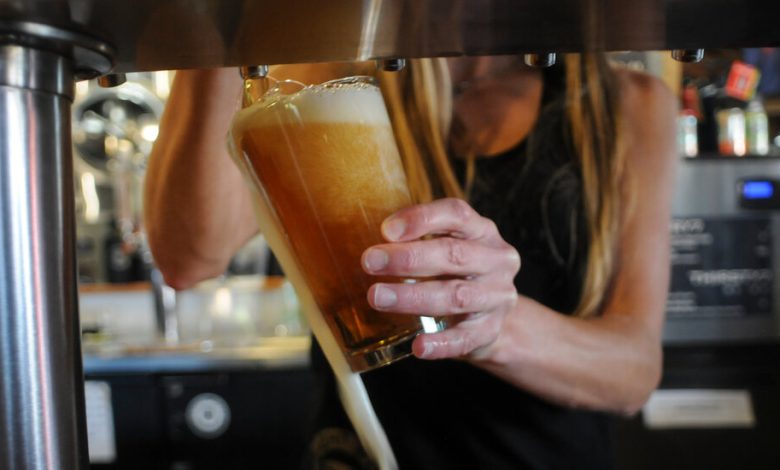Before Beer Became Lager, a Microbe Made a Mysterious Journey

As the story goes, a long time ago in Bavaria, beer underwent a transformation. Dark ale turned into a paler, gold-hued drink, and the beverage grew much more common around the time when a ducal edict restricted brewing to the winter months. The lager, as the new beer was called, had begun its journey to world domination.
Centuries on, geneticists have found that the yeast responsible for fermenting lagers is a hybrid of the traditional brewer’s yeast and another, cold-hardy yeast, Saccharomyces eubayanus. The lager yeast appears to be the result of a chance mating in a chilly brewery, where low temperatures allowed the hybrid to thrive.
But while brewer’s yeast is common enough, how the lager yeast’s other parent wound up in Bavaria has been harder to trace. It was first spotted in the wild in 2011, when biologists discovered the cold-loving yeast, S. eubayanus, living happily in the forests of Patagonia in South America. Then there were some tantalizing traces found in the Italian Alps, Tibet, western China and North Carolina.
So far, sightings in Europe have been almost nonexistent. But in a paper published Wednesday in the journal FEMS Yeast, biologists reported they had found S. eubayanus alive and well, living in the dirt of the University College Dublin campus in Ireland. The finding may provide a key clue about the microbe’s travels: If other samples are found across Europe, we may get a better picture of what led to that fortuitous meeting in a cold Bavarian cellar.
The Irish soil samples were collected by Stephen Allen, an undergraduate who was taking a lab course at University College Dublin run by Geraldine Butler, a professor of genetics, and her colleagues. When the team got a preview of what was living in the dirt, Dr. Butler had a strong hunch that one of the yeasts was the long-sought S. eubayanus. A firm identification had to wait until the microbe’s entire genome was sequenced, a process that took several weeks.
“I was kind of sitting over the sequencer, waiting for the data to come out,” Dr. Butler said.
Indeed, Mr. Allen’s samples yielded a pair of strains of S. eubayanus, and they appeared to be from the same branch of the family as the versions found in Tibet and North Carolina.
The finding matches with climactic modeling suggesting that Ireland would be a hospitable environment for the yeast, said Chris Hittinger, a professor of genetics at University of Wisconsin — Madison, who was on the team that found the yeast in Patagonia and not involved in the current study. What’s less clear is why the yeast been so difficult to find in the wild beyond South America, where it grows plentifully in association with beech trees and is thought to be a native species.
S. eubayanus does seem to be less abundant elsewhere, Dr. Hittinger said, such that researchers have to carefully cultivate yeasts in the lab have enough to sequence their genomes.
“I think the discovery in Europe now suggests that investing in that effort will be worthwhile,” he said.
Unearthing S. eubayanus in more placesmay help researchers start to see how its genetic diversity varies across the planet, which could shed light on how a yeast from South America made its way around the globe to help jump-start lager brewing in Bavaria.
“There is a question of the route,” Dr. Butler said. “The Tibetan one is a slightly closer relative of the lager yeast than the Irish ones are,” suggesting that perhaps the yeast got to Germany by way of Asia — although it’s impossible to say without more samples.
The yeast could have traveled over land long before humans entered the picture, perhaps hitching rides on birds and insects, Dr. Hittinger said.
For its part, Dr. Butler’s group will continue searching its university campus for S. eubayanus. Members are also curious about some more practical features of the organism.
“We’re interested to see what kind of beer it will make,” she said.




